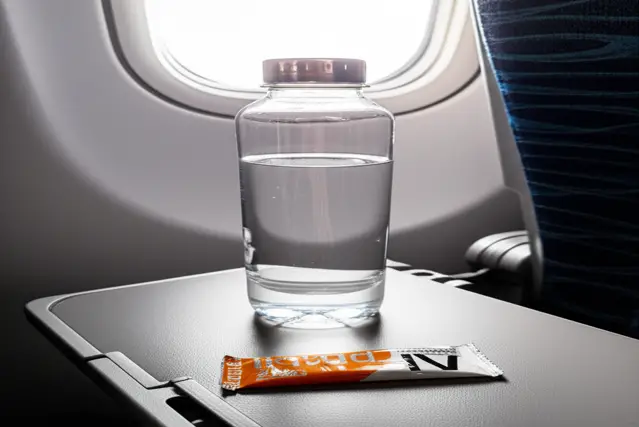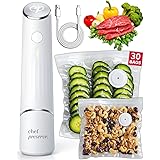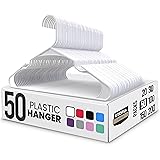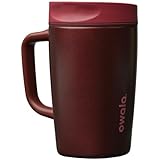Planning your next adventure and wondering if you can bring your trusty Liquid I.V. packets or prepared drinks on board? You’re not alone! Staying hydrated while traveling is crucial, and many travelers rely on electrolyte solutions like Liquid I.V. to combat dehydration, especially on long flights. This comprehensive guide, updated for 2025, breaks down the latest TSA regulations, offers practical tips, and answers all your burning questions about flying with Liquid I.V., ensuring you stay refreshed and avoid any airport hiccups.
We’ll cover everything from powder packets to pre-mixed drinks, carry-on versus checked baggage, and even international considerations. So, pack your bags, grab your boarding pass, and let’s dive in!
Table of Contents
Understanding the TSA and Liquid I.V.: The Basics
Before we delve into the specifics of bringing Liquid I.V. on a plane, let’s establish a foundational understanding of the key players involved: the Transportation Security Administration (TSA) and Liquid I.V. itself.
What is the TSA and Why Do They Matter?
The Transportation Security Administration (TSA) is a U.S. agency responsible for security at airports and other transportation hubs. Their primary goal is to protect the nation’s transportation systems by screening passengers and baggage for potential threats. TSA regulations are constantly evolving to adapt to emerging security concerns, so it’s vital to stay updated on their latest guidelines, especially when traveling with liquids, powders, or any items that might raise questions.
For travelers, this means being aware of the TSA’s “3-1-1 rule” for liquids in carry-on baggage (more on that later) and understanding that TSA officers have the final say on what is allowed through security. Their decisions are based on their assessment of potential threats and compliance with current regulations. Remember that even if an item is technically permitted, a TSA officer can still prohibit it if they deem it suspicious.
What is Liquid I.V. and Why Do People Use It?
Liquid I.V. is a popular electrolyte drink mix designed to enhance hydration. It utilizes Cellular Transport Technology (CTT) to deliver water and essential electrolytes directly into the bloodstream, purportedly hydrating the body faster and more efficiently than water alone. It comes in various flavors and formats, including powder packets that you mix with water and ready-to-drink bottles.

TSA liquid rules
People use Liquid I.V. for a variety of reasons, including:
Dehydration Prevention: Especially during travel, exercise, or hot weather.
Hangover Relief: Rehydrating and replenishing electrolytes after alcohol consumption.
Boosting Energy Levels: Providing a quick and convenient way to combat fatigue.
General Wellness: Maintaining optimal hydration for overall health.
The convenience and portability of Liquid I.V. have made it a favorite among travelers seeking to stay hydrated on the go, especially during long flights where the air can be extremely dry.
Liquid I.V. and TSA Regulations: A Detailed Breakdown (2025 Update)
Now, let’s get to the core question: Can you bring Liquid I.V. on a plane in 2025? The answer is yes, but with some important caveats. The rules differ depending on whether you’re dealing with powder packets or pre-mixed liquids, and whether you’re packing them in your carry-on or checked baggage.
Liquid I.V. Powder Packets: Carry-On vs. Checked Baggage
Good news! Liquid I.V. powder packets are generally permitted in both carry-on and checked baggage. However, there are still a few things to keep in mind.
Carry-On Baggage: The Powder Rule
The TSA has specific rules regarding powders in carry-on baggage. While there isn’t a strict “powder rule” that prohibits all powders, they are subject to additional screening. As of 2025, the TSA generally allows passengers to carry small amounts of powder, such as makeup, baby powder, and yes, even individual Liquid I.V. packets, in their carry-on bags.
Here’s what you need to know:
Quantity Matters: While there isn’t a hard limit on the number of individual packets you can bring, be prepared for the possibility of additional screening if you have a large quantity. It’s generally advisable to pack only what you need for your trip in your carry-on and place the rest in your checked baggage.
Separate for Screening: While not always required, it’s a good practice to remove your Liquid I.V. packets from your bag and place them in a separate bin for screening. This can help expedite the security process and avoid any unnecessary delays.
Possible Additional Screening: Be prepared for TSA officers to perform additional screening on your powder packets. This might involve opening the packets for inspection or using explosive trace detection (ETD) technology to test the contents.
Be Prepared to Explain: Be ready to explain what the powder is if asked. “It’s an electrolyte drink mix for hydration” is usually sufficient. Having the original packaging readily available can also be helpful.
Real-World Example: Sarah, a frequent traveler, always carries a few Liquid I.V. packets in her carry-on for long flights. She makes sure to separate them into a clear plastic bag when going through security, and she’s never had any issues. She even carries a printout from the TSA website regarding powder regulations just in case she encounters an unfamiliar TSA agent.
Checked Baggage: No Restrictions (Generally)
When it comes to checked baggage, you typically don’t have any restrictions on the amount of Liquid I.V. powder packets you can bring. You can pack as many as you need for your trip without worrying about the TSA’s powder rules. However, it’s always a good idea to ensure the packets are securely sealed to prevent leakage or damage during transit.
Liquid I.V. Ready-to-Drink: Navigating the 3-1-1 Rule
Bringing pre-mixed Liquid I.V. drinks presents a different set of challenges due to the TSA’s “3-1-1 rule” for liquids in carry-on baggage.
Understanding the 3-1-1 Rule
The TSA’s 3-1-1 rule states that you can bring a quart-sized bag of liquids, aerosols, gels, creams, and pastes in your carry-on bag. Each item must be in a travel-sized container that is 3.4 ounces (100 milliliters) or less. All items must fit comfortably in a single, transparent, quart-sized resealable bag.
Therefore, if you want to bring pre-mixed Liquid I.V. in your carry-on, you must adhere to the following:
3.4 oz (100ml) or Less: The Liquid I.V. drink must be in a container that holds 3.4 ounces (100 milliliters) or less. Most Liquid I.V. bottles are larger than this, so you’ll likely need to transfer the drink into smaller, travel-sized containers.
Quart-Sized Bag: The travel-sized containers must fit comfortably in a single, transparent, quart-sized resealable bag.
One Quart-Sized Bag Per Person: Each passenger is limited to one quart-sized bag of liquids.
Important Note: Even if your Liquid I.V. drink is in a container that is 3.4 ounces or less, TSA officers may still ask you to sample it or perform additional screening if they deem it necessary. This is less common, but it can happen.
Checked Baggage: Best Option for Larger Quantities
If you want to bring a larger quantity of Liquid I.V. ready-to-drink bottles, your best bet is to pack them in your checked baggage. There are generally no restrictions on the size or quantity of liquids you can bring in your checked baggage, as long as they are not flammable or hazardous materials. However, it’s essential to pack them securely to prevent leaks or spills that could damage your belongings.
Pro Tip: Place your Liquid I.V. bottles in a resealable plastic bag before packing them in your checked baggage. This will help contain any spills and protect your other items.
Exemptions to the 3-1-1 Rule: Medical Necessities and Baby Food/Formula
The TSA provides some exceptions to the 3-1-1 rule for medically necessary liquids and baby food/formula. However, these exceptions may not directly apply to Liquid I.V., depending on your specific situation.
Medically Necessary Liquids
According to the TSA, you are allowed to bring medically necessary liquids in quantities greater than 3.4 ounces in your carry-on baggage. However, you must declare these items to a TSA officer at the security checkpoint. You may also need to provide documentation from your doctor to verify the medical necessity of the liquid.
While Liquid I.V. is not typically considered a medically necessary liquid, you might be able to argue for an exemption if you have a medical condition that requires you to stay hydrated with electrolyte solutions. It’s best to contact the TSA Cares helpline (more on that below) before your trip to discuss your situation and determine if you qualify for an exemption. Also, carry a note from your doctor if you have a medical condition that necessitates the liquid. This could significantly help in navigating the TSA screening process.
Baby Food/Formula
The TSA also allows passengers to bring breast milk, formula, and juice for infants and toddlers in quantities greater than 3.4 ounces in their carry-on baggage. You are not required to adhere to the 3-1-1 rule for these items. However, you must declare them to a TSA officer at the security checkpoint.
This exemption would only apply if you are traveling with an infant or toddler and using Liquid I.V. as a hydration solution for them (though this is generally not recommended for infants without consulting a pediatrician, due to the electrolyte content).
Packing Tips for Traveling with Liquid I.V.
Regardless of whether you’re bringing powder packets or pre-mixed drinks, here are some helpful packing tips to ensure a smooth and hassle-free travel experience:
General Packing Advice
Original Packaging: If possible, bring Liquid I.V. in its original packaging. This will help TSA officers quickly identify the product and understand its purpose.
Clear Bags: Pack your Liquid I.V. packets or travel-sized bottles in clear, resealable plastic bags. This will make it easier for TSA officers to inspect them and will also help contain any leaks or spills.
Secure Sealing: Ensure that all Liquid I.V. packets and bottles are securely sealed to prevent leakage or damage during transit.
Easy Access: Keep your Liquid I.V. readily accessible in your carry-on bag so you can easily remove it for screening if necessary.
Consider Destination: Think about whether you can purchase Liquid I.V. at your destination. If so, you may want to bring only enough for the trip and buy the rest upon arrival. This can simplify your packing process.
Packing Powder Packets
Separate Bins: Place your Liquid I.V. powder packets in a separate bin when going through security.
Be Prepared for Inspection: Be prepared for TSA officers to open and inspect your powder packets.
Travel-Sized Pouches: Consider using small, travel-sized pouches to store your individual Liquid I.V. packets. This will help keep them organized and prevent them from getting crushed.
Packing Ready-to-Drink Liquids
Travel-Sized Containers: Transfer your Liquid I.V. into travel-sized containers that are 3.4 ounces (100 milliliters) or less.
Leak-Proof Bottles: Use leak-proof travel bottles to prevent spills in your carry-on bag.
Checked Baggage Protection: If packing in checked luggage, wrap each bottle individually in bubble wrap or clothing to protect it from breakage.
Navigating Airport Security with Liquid I.V.: What to Expect
Going through airport security can be a stressful experience, especially when you’re carrying items that might raise questions. Here’s what you can expect when traveling with Liquid I.V.:
At the Security Checkpoint
Be Patient and Polite: Remember that TSA officers are just doing their job. Be patient and polite, even if you encounter delays or inconveniences.
Declare Your Items: If you’re carrying medically necessary liquids or baby food/formula, declare these items to a TSA officer before going through the security scanner.
Follow Instructions: Listen carefully to the instructions given by TSA officers and follow them diligently.
Answer Questions Honestly: If a TSA officer asks you about your Liquid I.V., answer their questions honestly and clearly.
Cooperate with Screening: Cooperate fully with any additional screening procedures requested by TSA officers.
Have Documentation Ready: If claiming a medical exception, have your doctor’s note or other documentation ready for inspection.
Potential Scenarios and How to Handle Them
Liquid I.V. Flagged for Additional Screening: If your Liquid I.V. is flagged for additional screening, don’t panic. This doesn’t necessarily mean you’ve done anything wrong. It simply means that the TSA officer needs to take a closer look at the item. Remain calm and cooperative.
TSA Officer Asks You to Sample Your Liquid I.V.: In rare cases, a TSA officer may ask you to sample your Liquid I.V. to verify that it is what you claim it to be. If this happens, comply with their request. Remember, they are trying to ensure safety.
TSA Officer Confiscates Your Liquid I.V.: If a TSA officer decides to confiscate your Liquid I.V., ask for a supervisor to review the decision. If the supervisor upholds the confiscation, politely accept the decision and move on. Don’t argue or become confrontational, as this could lead to further complications. Understand their decision might be influenced by factors unknown to you.
TSA Resources and Contact Information
Staying informed about TSA regulations is crucial for a smooth travel experience. Here are some valuable resources and contact information you can use to get the latest updates and address any specific concerns you may have:
TSA Website: The TSA website (www.tsa.gov) is the official source for all TSA regulations and policies. You can find information on prohibited items, the 3-1-1 rule, and other important travel tips.
TSA Contact Center: The TSA Contact Center is available to answer your questions and provide assistance with travel-related inquiries. You can reach them by phone or email.
TSA Cares Helpline: The TSA Cares helpline is a dedicated resource for travelers with disabilities or medical conditions. If you have concerns about traveling with Liquid I.V. due to a medical condition, you can contact TSA Cares for assistance. The phone number is 1-855-787-2227.
Ask TSA on Twitter: You can also reach out to the TSA via Twitter by tweeting your questions to @AskTSA. This is a quick and easy way to get answers to your travel-related inquiries.
MyTSA App: The MyTSA app provides real-time information about security wait times at airports across the country. It also includes a feature that allows you to search for specific items to see if they are permitted in carry-on or checked baggage.
Table: Key TSA Resources for Travelers
| Resource | Description | Website/Contact Information |
|---|---|---|
| TSA Website | Official source for TSA regulations and policies. | www.tsa.gov |
| TSA Contact Center | Answers questions and provides assistance with travel-related inquiries. | Available on TSA website |
| TSA Cares Helpline | Dedicated resource for travelers with disabilities or medical conditions. | 1-855-787-2227 |
| Ask TSA on Twitter | Quick and easy way to get answers to travel-related inquiries. | @AskTSA |
| MyTSA App | Real-time security wait times and information on permitted items. | Available on iOS and Android |
Staying Hydrated on Your Flight: Beyond Liquid I.V.
While Liquid I.V. can be a convenient way to stay hydrated while flying, it’s not the only option. Here are some other tips for staying hydrated during your journey:
Drink Plenty of Water
The most important thing you can do to stay hydrated on a flight is to drink plenty of water. The dry air in airplanes can quickly dehydrate you, so it’s important to drink water regularly throughout your flight. Bring an empty water bottle through security and fill it up at a water fountain on the other side. Or, purchase water after you pass through security. Many airlines offer water service, but it may not be frequent enough to keep you adequately hydrated.
Avoid Alcohol and Caffeine
Alcohol and caffeine are diuretics, which means they can actually dehydrate you. Avoid drinking alcohol or caffeinated beverages before and during your flight. If you do choose to drink alcohol, be sure to drink plenty of water to counteract its dehydrating effects.
Eat Hydrating Foods
Some foods are naturally hydrating, such as fruits and vegetables with high water content. Consider packing some hydrating snacks, such as cucumbers, watermelon, or grapes, to eat during your flight. These foods can help you stay hydrated and provide essential nutrients.
Use Moisturizer and Lip Balm
In addition to drinking plenty of fluids, it’s also important to moisturize your skin and lips to combat the dry air on airplanes. Apply moisturizer to your face and hands regularly throughout your flight, and use lip balm to keep your lips from cracking. These simple steps can help you stay comfortable and prevent dehydration.
Consider Electrolyte Tablets or Other Hydration Supplements
If you’re looking for an alternative to Liquid I.V., you can consider electrolyte tablets or other hydration supplements. These products typically contain electrolytes like sodium, potassium, and magnesium, which can help you stay hydrated and replenish lost fluids. They are often available in convenient, travel-friendly formats, such as tablets or effervescent powders.
International Travel Considerations
If you’re traveling internationally, it’s important to be aware that TSA regulations may not apply in other countries. Each country has its own security regulations, and these regulations can vary widely. Before traveling internationally, it’s best to check the security regulations of the country you’re visiting to ensure that you can bring your Liquid I.V. with you.
Researching International Airport Security Regulations
The best way to research international airport security regulations is to visit the website of the airport or airline you’re flying with. These websites typically provide information on prohibited items, liquid restrictions, and other important security guidelines. You can also contact the airport or airline directly to ask specific questions about their security regulations.
Cultural Considerations
In addition to security regulations, it’s also important to be mindful of cultural considerations when traveling internationally. In some cultures, it may be considered impolite to drink or eat in public, so it’s important to be respectful of local customs and traditions. It’s also a good idea to learn a few basic phrases in the local language, such as “water, please,” to make it easier to communicate your needs.
Trends in Travel Hydration: What’s New in 2025?
The landscape of travel hydration is constantly evolving, with new products and trends emerging each year. Here are some of the latest trends in travel hydration as of 2025:
Increased Focus on Sustainability
Sustainability is a growing concern for travelers, and this is reflected in the increasing popularity of eco-friendly hydration solutions. Many companies are now offering reusable water bottles, refillable electrolyte powders, and other sustainable alternatives to traditional single-use plastic bottles.
Personalized Hydration Solutions
Travelers are increasingly seeking personalized hydration solutions that are tailored to their individual needs. This has led to the development of apps and devices that can track your hydration levels and provide customized recommendations for fluid intake and electrolyte supplementation. These apps often integrate with wearable fitness trackers to provide a holistic view of your health and hydration.
Immunity-Boosting Hydration
In the wake of the COVID-19 pandemic, there is a greater emphasis on immunity-boosting hydration solutions. Many electrolyte drinks and supplements now include ingredients like vitamin C, zinc, and antioxidants, which are believed to support immune function and protect against illness.

electrolyte powder travel
Hydration on Demand Services
Some airports and airlines are starting to offer “hydration on demand” services, where travelers can order customized electrolyte drinks or hydration packs to be delivered to their gate or seat. These services provide a convenient way to stay hydrated without having to carry your own supplies.
Statistics on Travel Dehydration and Electrolyte Imbalance
Dehydration and electrolyte imbalance are common problems for travelers, especially on long flights. Here are some statistics that highlight the prevalence and potential consequences of these issues:
Study Findings: A study published in the Journal of Aerospace Medicine found that passengers on long-haul flights can lose up to 1.5 liters of fluid due to the dry air in the cabin.
Dehydration Symptoms: Dehydration can lead to a variety of symptoms, including fatigue, headache, dizziness, muscle cramps, and cognitive impairment.
Electrolyte Imbalance Concerns: Electrolyte imbalance can disrupt normal bodily functions, such as muscle contractions, nerve impulses, and fluid balance.
Performance Impact: Dehydration and electrolyte imbalance can negatively impact athletic performance, cognitive function, and overall well-being.
Cost and Productivity Loss: Lost productivity due to illness caused or exacerbated by dehydration is estimated to cost businesses billions of dollars annually.
The Future of Travel Hydration
The future of travel hydration is likely to be shaped by several factors, including technological advancements, growing awareness of health and wellness, and increasing concerns about sustainability. Here are some potential developments we may see in the coming years:
Smart Water Bottles
Smart water bottles that can track your fluid intake, remind you to drink, and even purify water are becoming increasingly popular. These bottles can connect to your smartphone or other devices to provide personalized hydration recommendations.
Personalized Electrolyte Solutions
Advances in personalized medicine may lead to the development of electrolyte solutions that are tailored to your individual needs and genetic makeup. These solutions could be designed to optimize your hydration and electrolyte balance based on your unique physiological profile.
Sustainable Hydration Technologies
New technologies are being developed to produce sustainable and environmentally friendly hydration solutions. These technologies include water purification systems that can be used in airports and airplanes, as well as biodegradable and compostable packaging for electrolyte powders and drinks.
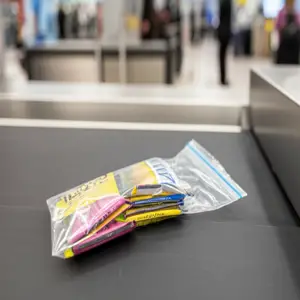
travel hydration pack
AI-Powered Hydration Assistants
Artificial intelligence (AI) could be used to develop virtual hydration assistants that can provide personalized recommendations and support to travelers. These assistants could analyze your travel itinerary, activity level, and other factors to determine your hydration needs and provide tailored advice.
FAQ: Your Burning Questions About Bringing Liquid I.V. on a Plane Answered
Still have questions? Here are some frequently asked questions about bringing Liquid I.V. on a plane, along with detailed answers to help you prepare for your next trip:
Can I bring a full, unopened Liquid I.V. bottle through security?
No, you cannot bring a full, unopened Liquid I.V. bottle larger than 3.4 ounces (100 milliliters) through security in your carry-on baggage. This is due to the TSA’s 3-1-1 rule, which restricts the size of liquids in carry-on bags. You can, however, pack full, unopened Liquid I.V. bottles in your checked baggage.
Are Liquid I.V. packets considered liquids by the TSA?
No, Liquid I.V. powder packets are not considered liquids by the TSA. They are subject to the rules regarding powders, which generally allow small amounts of powder in carry-on bags, but may be subject to additional screening. There are typically no restrictions on powder packets in checked baggage.
Can I mix Liquid I.V. with water after I go through security?
Yes, you can mix Liquid I.V. with water after you go through security. Bring an empty water bottle through security and fill it up at a water fountain on the other side. You can then add your Liquid I.V. powder packet to the water and enjoy your hydrating beverage.
What if I have a medical condition that requires me to drink Liquid I.V.?
If you have a medical condition that requires you to drink Liquid I.V., you may be able to get an exemption to the 3-1-1 rule for medically necessary liquids. Contact the TSA Cares helpline (1-855-787-2227) before your trip to discuss your situation and determine if you qualify for an exemption. Be sure to bring documentation from your doctor to verify the medical necessity of the liquid.
Will TSA officers open my Liquid I.V. packets to inspect them?
Yes, TSA officers may open your Liquid I.V. packets to inspect them, especially if they are flagged for additional screening. This is a standard security procedure, and you should cooperate fully with their requests. Be prepared to explain what the powder is and why you are carrying it.
Can I bring Liquid I.V. on an international flight?
Yes, you can generally bring Liquid I.V. on an international flight, but you need to check the security regulations of the country you’re visiting. TSA regulations only apply to flights departing from or arriving in the United States. Other countries have their own security regulations, which may differ from those of the TSA.
4: Are there any specific flavors of Liquid I.V. that are prohibited by the TSA?
No, there are no specific flavors of Liquid I.V. that are prohibited by the TSA. As long as you comply with the TSA’s rules regarding liquids and powders, you can bring any flavor of Liquid I.V. with you on a plane.
What’s the best way to pack Liquid I.V. in my checked baggage to prevent leaks?
To prevent leaks when packing Liquid I.V. bottles in your checked baggage, place each bottle in a resealable plastic bag. You can also wrap each bottle individually in bubble wrap or clothing to protect it from breakage. This will help contain any spills and protect your other items.
Can I buy Liquid I.V. at the airport after I go through security?
It depends on the airport. Some airports have stores that sell Liquid I.V., but not all of them do. Check the airport’s website or directory to see if Liquid I.V. is available for purchase after security. Alternatively, you can purchase Liquid I.V. online and have it shipped to your destination.
What should I do if a TSA officer confiscates my Liquid I.V.?
If a TSA officer confiscates your Liquid I.V., ask for a supervisor to review the decision. If the supervisor upholds the confiscation, politely accept the decision and move on. Don’t argue or become confrontational, as this could lead to further complications. Remember, the TSA officer is following security protocols and has the final say on what is allowed through security.
Conclusion: Final Thoughts on Flying with Liquid I.V. and Staying Hydrated
Traveling can be both exciting and taxing on the body. Maintaining proper hydration is crucial for enjoying your journey to the fullest, and Liquid I.V. can be a valuable tool for achieving that. Understanding the TSA’s regulations regarding liquids and powders is essential to avoid any unnecessary delays or issues at the security checkpoint. Remember that powder packets are generally permissible, while pre-mixed liquids must adhere to the 3-1-1 rule in your carry-on, but are less restricted in checked baggage. Utilizing the TSA’s resources, like their website and the TSA Cares helpline, can provide clarity and address any unique concerns you may have before your trip.
Beyond Liquid I.V., remember that consistent water intake, avoiding diuretics, and consuming hydrating foods can all contribute to maintaining healthy hydration levels during your travels. Stay informed about the latest trends in travel hydration, from sustainable options to personalized solutions, so you can make the best choices for your needs and preferences. As travel continues to evolve, advancements in technology and a greater focus on wellness will likely bring even more innovative ways to stay hydrated on the go. By staying informed, planning ahead, and packing smart, you can ensure that you arrive at your destination feeling refreshed, energized, and ready to explore. So, pack your bags, stay hydrated, and enjoy your travels! Remember to check the TSA website or contact them directly for the most up-to-date information, as regulations can change. Have a safe and well-hydrated trip!

